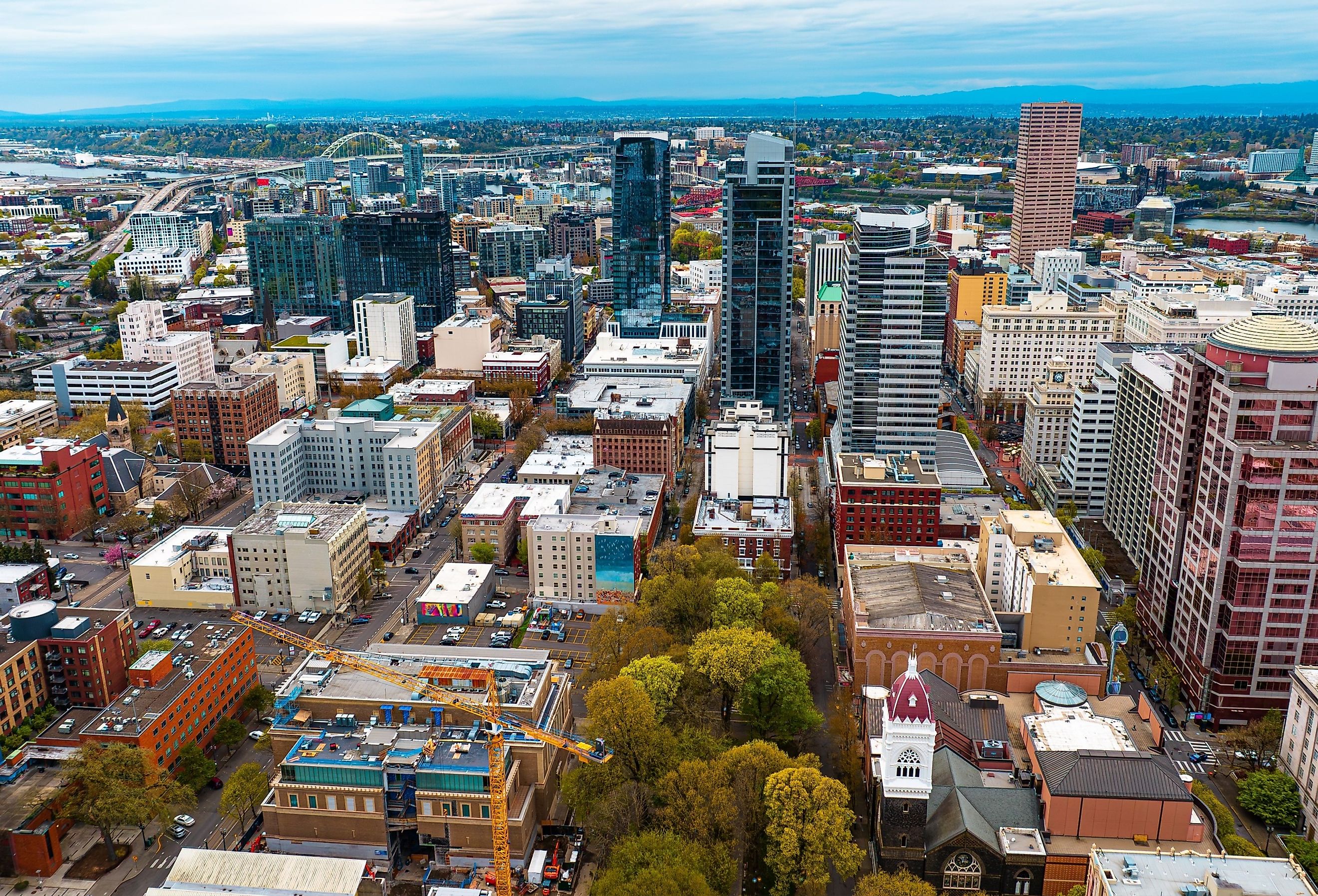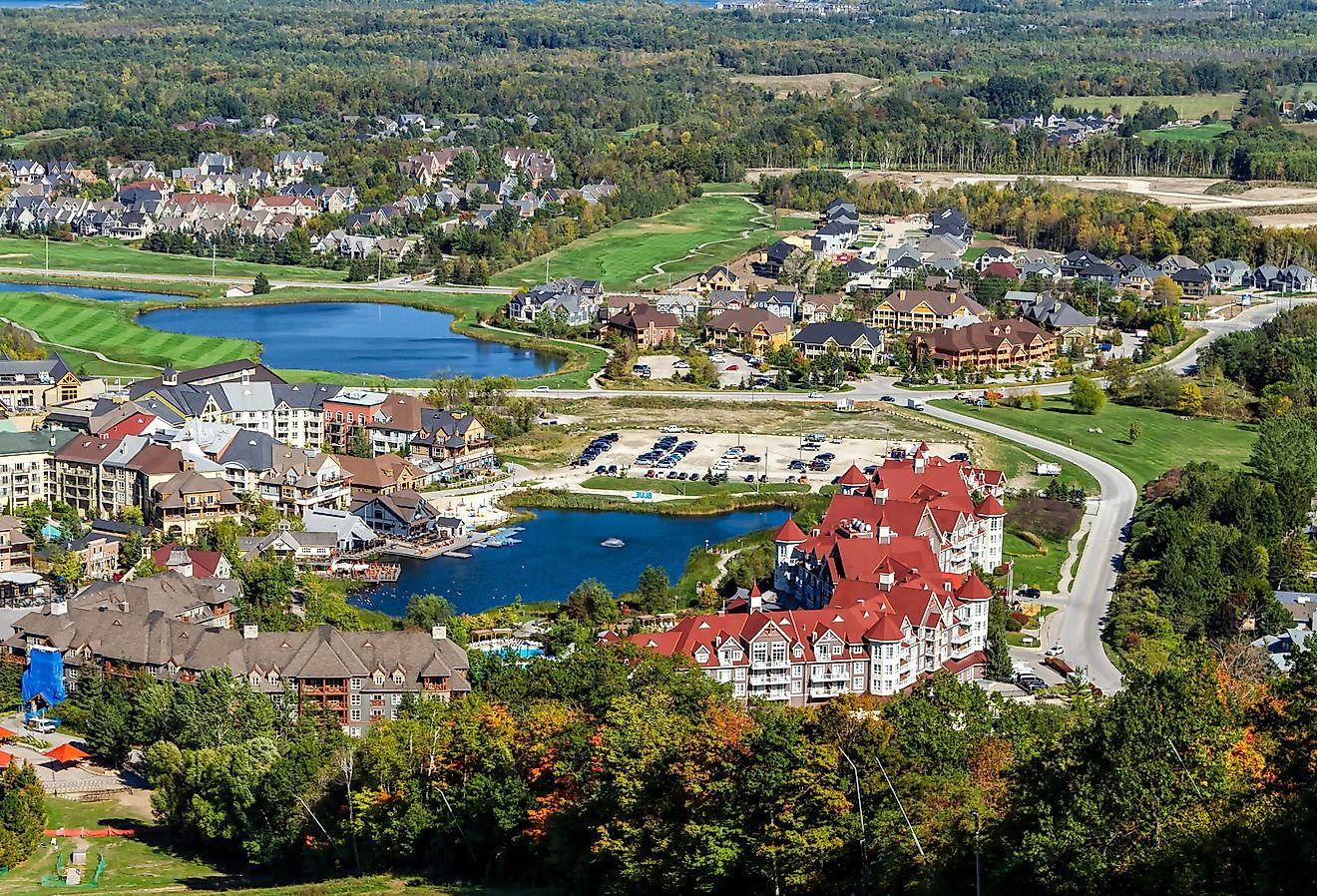
Discover The Largest Cities In Oregon
The Beaver State is valued for its diverse cities and cultures, only to be matched by its varied landscapes. From its bustling urban centers to its rugged coastline to the snow-capped peaks of the Cascades, Oregon offers visitors and residents a chance to experience both pristine nature and all the entertainment, commerce, and culture one could want. The largest cities in the state are remarkable for their technology, arts, and outdoor activities. Known in many cases for their progressive politics and funky atmosphere, these cities should be on one’s must-visit list.
Portland, the largest city in the state, is known for its liberal politics and environmental practices and as a tech hub. Eugene is the home of the esteemed University of Oregon. Salem is the state capital with a deep agricultural past. Gresham has a mix of urban and suburban vibes. Bend, a one-time logging town, is now a tourist hotspot, with opportunities for skiing, hiking, and fishing. Hillsboro is mighty in tech and home to companies like Intel. Beaverton is the global headquarters of Nike. Join our tour of the seven biggest cities in Oregon and discover all the culture, beauty, commerce, education, demographic details, landmarks, and travel tips for each!
Portland

“What’s in a name?” Shakespeare queried. If Portland, Oregon, had been named after Boston, MA, and not after Portland, Maine, would it be any less sweet? Decided by a coin toss between two early settlers, what is now the most populous city in the state, was given its name. Founded in the mid-1800s, the city became a center for trade. Known as “The City of Roses,” Portland is admired by many of its residents for its progressive politics, environmentalism, and outdoorsy, active lifestyle. Also known as “Silicon Forest,” the city became a tech hub in the Northwest, distinguishing itself in green energy and manufacturing.
The city is racially and culturally diverse, with 10% of the population being Hispanic or Latino, 9% mixed, 8% Asian and 6% black. The split between male and female is roughly even. The Portland Art Museum, International Film Festival, and Rose Festival are at the heart of the city’s culture. Landmarks and educational institutions include Powell’s City Books, Pioneer Courthouse Square, and Washington Park. Portland State University is located here. Spring and fall offer the best weather for visitors. Consider exploring the city by bike, if the weather is favorable, or by rail.
Eugene

Nestled along the banks of the Willamette River, Eugene was settled in the mid-1800s and has long offered residents and visitors natural landscapes to admire, creating an impeccable outdoor lifestyle. 51% of the population is female, 10% Hispanic/Latino, 9% mixed and 4% are Asian. Eugene is a university town with a youthful vibe and has been a countercultural center since the 1960s. The university is central to the economy, along with healthcare, manufacturing, and outdoor gear companies. Known as “TrackTown USA,” the city is a hub for track and field sports—Oregon Bach Festival and Eugene Saturday Market round out the cultural experience. Local landmarks include the Jordan Schnitzer Museum of Art, Hendricks Park, and Autzen Stadium (University of Oregon football). Summer is the time to visit Eugene for outdoor activities, plus it gives one a chance to experience the Oregon Country Fair.
Salem

Originally the capital of the Oregon Territory and later the state’s capital, Salem is located along the Willamette River and is rich in history. Founded in 1842, the city was established by Methodist missionaries. With its fertility, the Willamette Valley has been a significant force in the local economy, along with Willamette University and Chemeketa Community College (also the primary providers of higher education); however, the government is the main employer. Salem is culturally and ethnically diverse, with 23% of the population being Hispanic/Latino, 12% mixed race, and 3% Asian. There are slightly more men than women in Salem. The Salem Art Fair and Festival, the Oregon State Fair, and the Elsinore Theatre are among the significant influences of the culture. Willamette University, Bush House Museum, Oregon State Capitol, and Silver Falls State Park are local landmarks and attractions. Spring and Fall are some of the best times to visit, and one shouldn’t miss Salem Saturday Market.
Gresham

The city of Gresham lies From the lowlands between Portland and the Cascade Mountains. The nearby Sandy River flanks the town, and the relatively flat terrain gradually ascends eastward to the Mt. Hood National Forest. The region offers a mix of densely forested areas with open clearings of farmland. Founded in the mid-19th century, the community was largely supported by agriculture. Today, Gresham has diversified into healthcare, manufacturing and retail. The downtown offers a small-town feel, due to its low-rise buildings and family centric culture. The charming walkable downtown, with its tree-lined streets, have visitors feeling right at home. The growing immigrant population is making the city more diverse, with 21% being Hispanic/Latino, 12% mixed, 5% Asian and nearly 4% black. There are slightly more males than females. Gresham’s small but expanding arts scene, represented by the annual Arts Festival, contributes to the town’s character. Landmarks and attractions are the Main City Park, the Gresham Japanese Garden and the Columbia River Gorge. Mt. Hood Community College is the city’s main source of higher education. Summer is the ideal time to visit, so one can explore the Columbia River Gorge.
Hillsboro

The mid-1800s city of Hillsboro has become one of the fastest growing in the state, thanks to its booming tech industry, with companies like Intel and Tektronix, leading the way. This has attracted many young professionals and families. 24% of the population is Hispanic/Latino, 14% are mixed, nearly 12% Asian and 3% black. There are slightly more males than females. The culture of the city is shaped by the Hillsboro Symphony Orchestra, events like the Oregon International Air Show, and local art galleries. Landmarks and attractions include the Rice Northwest Museum of Rocks and Minerals, Roloff Farms, and Rood Bridge Park. Pacific University’s Health Professionals Camus and a handful of community colleges shape the Hillsboro education scene. Summer is the best season to visit for the outdoor concerts and nearby Willamette Valley wineries.
Bend

Located in the high desert region of Central Oregon, Bend has become a hotspot for visitors and those looking to settle in Oregon. The area's topography is marked by its arid landscapes, Ponderosa pine forests, and volcanic rock formations. The Deschutes River runs through the city's center, and Mount Bachelor and the Cascade Range rule the canvas of the western skyline. The downtown is a blend of modern and historic architecture. Once a logging town in the early 1900s, Bend’s economy is now supported by tourism, with its plentiful outdoor activities of fishing, hiking, and skiing.
Further, Bend hosts manufacturing companies and startups. There are slightly more males than females, and while most of the population is white, a sizable Hispanic/Latino population of 9% and 7% mixed. Bend is admired for its craft beer scene and the Bend Summer Festival. Local landmarks include the Deschutes River, Mt. Bachelor, and the High Desert Museum. Bend is home to Central Oregon College and the OSU-Cascades campus. Bend is great to visit year-round, but there are more outdoor sports options in summer and winter.
Beaverton

The city of Beaverton, which sits in the shadows of Portland, offers a mix of urban and suburban living. More than just a suburb of Portland, Beaverton has its own culture, with a significant Asian and Latino presence. 17% of the population is Hispanic/Latino, 10% mixed, 12% Asian and nearly 3% black. Males hold a slight majority in the city. The town is known for its Beaverton Night Market, summer festivals, and outdoor concerts. Like many other cities in the region, Beaverton is a major tech center, as well as being the global headquarters for Nike. Landmarks and attractions include the Tualatin Hills Nature Park, Beaverton Farmers Market, and the Nike World Headquarters. Oregon Health and Science University and several other community colleges offer higher education. Summertime is the best time to visit to enjoy Tualatin Hills Nature Park and all the outdoor festivals and concerts.
Parting Thoughts
These seven cities provide a window into the splendor, economic might, history, culture and political landscape of some of what the state has to offer. Both for future residents and visitors. From the popping downtowns to the nearby nature and outdoor activities, these unique cities should be experienced first first-hand.
| Rank | City | Population | County |
| 1 | Portland | 630,498 | Multonomah |
| 2 | Eugene | 177,899 | Lane |
| 3 | Salem | 177,432 | Marion, Polk |
| 4 | Gresham | 110,685 | Multonomah |
| 5 | Hillsboro | 107,703 |
Washington |
| 6 | Bend | 104,557 | Deschutes |
| 7 | Beaverton | 96,945 | Washington |











